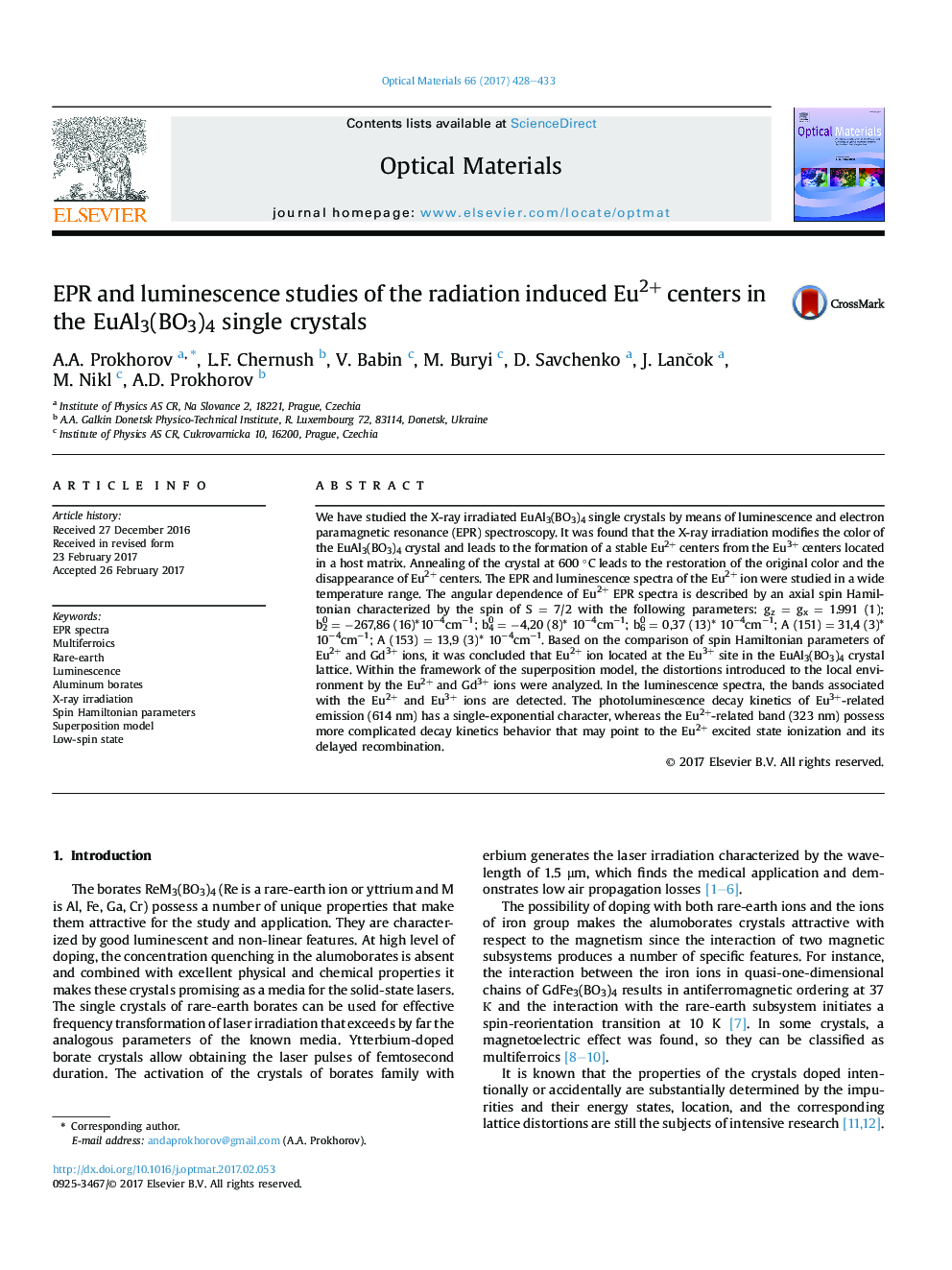| Article ID | Journal | Published Year | Pages | File Type |
|---|---|---|---|---|
| 5442842 | Optical Materials | 2017 | 6 Pages |
Abstract
We have studied the X-ray irradiated EuAl3(BO3)4 single crystals by means of luminescence and electron paramagnetic resonance (EPR) spectroscopy. It was found that the X-ray irradiation modifies the color of the EuAl3(BO3)4 crystal and leads to the formation of a stable Eu2+ centers from the Eu3+ centers located in a host matrix. Annealing of the crystal at 600 °C leads to the restoration of the original color and the disappearance of Eu2+ centers. The EPR and luminescence spectra of the Eu2+ ion were studied in a wide temperature range. The angular dependence of Eu2+ EPR spectra is described by an axial spin Hamiltonian characterized by the spin of S = 7/2 with the following parameters: gz = gx = 1.991 (1); b20 = â267,86 (16)*10â4cmâ1; b40 = â4,20 (8)* 10â4cmâ1; b60 = 0,37 (13)* 10â4cmâ1; A (151) = 31,4 (3)* 10â4cmâ1; A (153) = 13,9 (3)* 10â4cmâ1. Based on the comparison of spin Hamiltonian parameters of Eu2+ and Gd3+ ions, it was concluded that Eu2+ ion located at the Eu3+ site in the EuAl3(BO3)4 crystal lattice. Within the framework of the superposition model, the distortions introduced to the local environment by the Eu2+ and Gd3+ ions were analyzed. In the luminescence spectra, the bands associated with the Eu2+ and Eu3+ ions are detected. The photoluminescence decay kinetics of Eu3+-related emission (614 nm) has a single-exponential character, whereas the Eu2+-related band (323 nm) possess more complicated decay kinetics behavior that may point to the Eu2+ excited state ionization and its delayed recombination.
Keywords
Related Topics
Physical Sciences and Engineering
Materials Science
Ceramics and Composites
Authors
A.A. Prokhorov, L.F. Chernush, V. Babin, M. Buryi, D. Savchenko, J. LanÄok, M. Nikl, A.D. Prokhorov,
